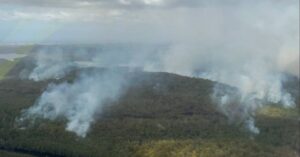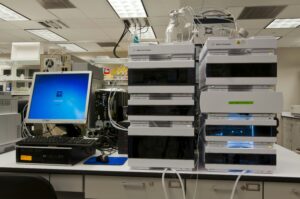
June 9, 2025: In a groundbreaking discovery, an international team of astronomers led by the University of Galway has identified a potential site for the formation of a new planet, likely a gas giant several times the mass of Jupiter. Utilizing the European Southern Observatory’s Very Large Telescope (ESO’s VLT) in Chile, the researchers captured remarkable images of a distant young star surrounded by a structured disk of scattered near-infrared light.
The European Southern Observatory, a leading international astronomy organization, unveiled the stunning view of this planet-forming disk as their picture of the week. The disk stretches out to 130 astronomical units from its parent star, a distance equivalent to 130 times that between Earth and the Sun. It features a bright ring followed by a gap centered at approximately 50 astronomical units. For perspective, Neptune, the farthest planet in our solar system, orbits the Sun at about 30 astronomical units.
Unveiling the Cosmic Cradle
Within the disk gap, reminiscent of the periphery of a hurricane on Earth, a system of spiral arms emerges. Although appearing minuscule in the image, the inner part of this planet-forming system spans 40 astronomical units in radius, capable of encompassing all the planets in our solar system.
The study, spearheaded by Dr. Christian Ginski from the Centre for Astronomy at the University of Galway, was co-authored by four postgraduate students from the same institution. Dr. Ginski remarked,
“While our team has now observed close to 100 possible planet-forming disks around nearby stars, this image is something special. One rarely finds a system with both rings and spiral arms in a configuration that almost perfectly fits the predictions of how a forming planet is supposed to shape its parent disk according to theoretical models.”
Collaboration and Innovation
The study, published in the international journal Astronomy and Astrophysics, highlights the collaborative efforts of a diverse research team. Dr. Ginski emphasized the critical contributions of the University of Galway’s graduate students, stating,
“Besides this exceptionally beautiful planet-forming cradle, there is something else that I find quite special about this study. Without the critical help of Chloe Lawlor, Jake Byrne, Dan McLachlan, and Matthew Murphy, we would not have been able to finalize the analysis of these new results.”
Chloe Lawlor, a PhD student specializing in Astrophysics, expressed her enthusiasm,
“Working with Dr. Christian Ginski on the 2MASS1612 paper has been an incredible experience. This work has been the perfect introduction to scientific writing and collaboration, and I’m very grateful for this kick-start to my research career.”
Jake Byrne, an MSc student, echoed similar sentiments,
“It’s an exciting time to be involved in planet formation theory at the University of Galway. There was a strong sense of collaboration among everyone involved in this paper, and I’m grateful to have been part of it.”
The Road Ahead
The broader research team, including colleagues from the UK, Germany, Australia, USA, Netherlands, Italy, Chile, France, and Japan, speculates on the presence of a planet based on the observed structure, rings, and spirals in the disk. They note some tentative atmospheric emissions indicative of such a planet, which require further study for confirmation.
In a significant development, Dr. Ginski and his team have secured observation time with the James Webb Space Telescope (JWST) in the upcoming cycle. The unprecedented sensitivity of the JWST may allow the team to capture an actual image of the young planet. If confirmed, this site could become a prime laboratory for studying planet-disk interactions.
For further details, the full study can be accessed here. The ESO photo of the disk is available here.







